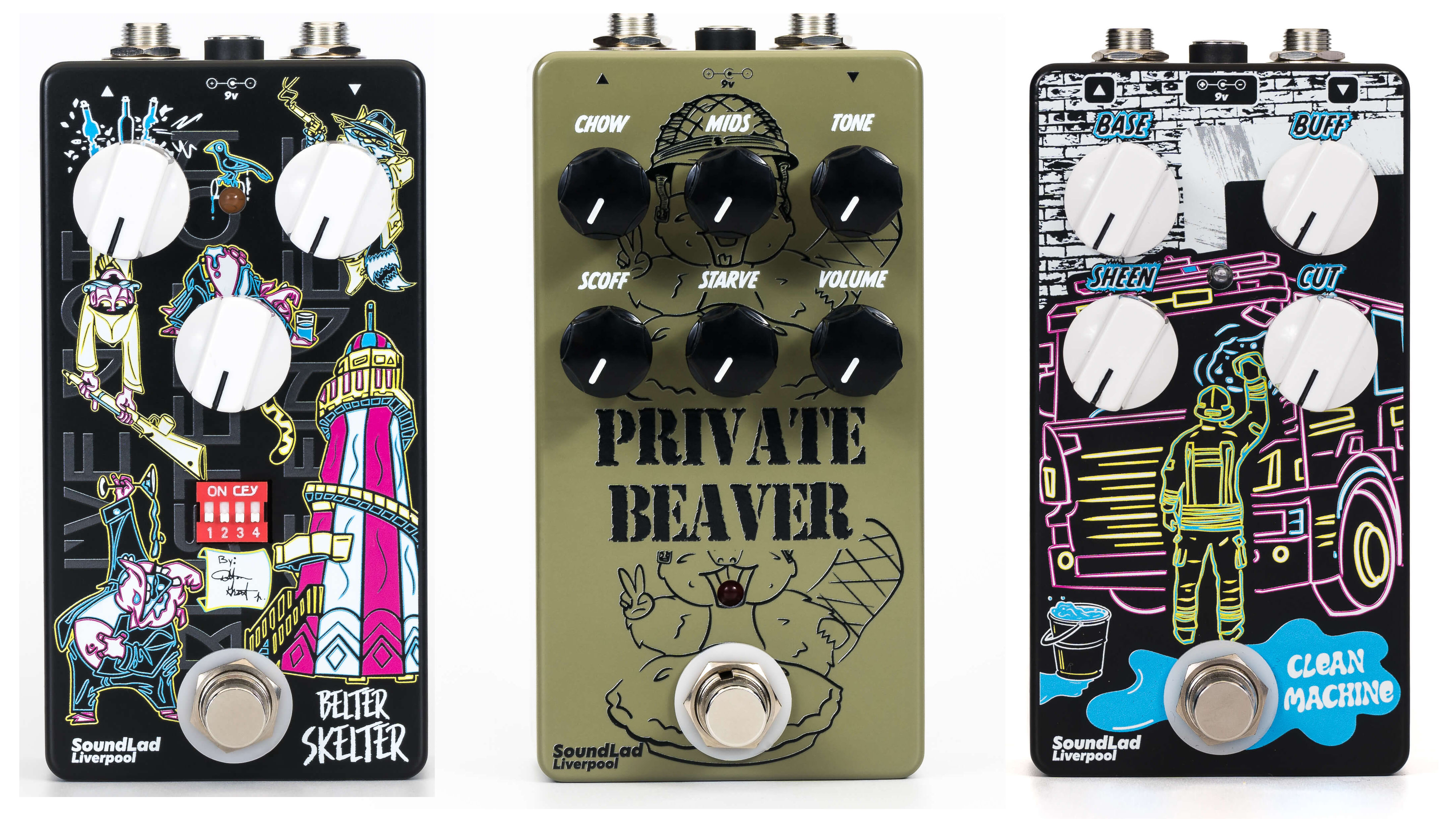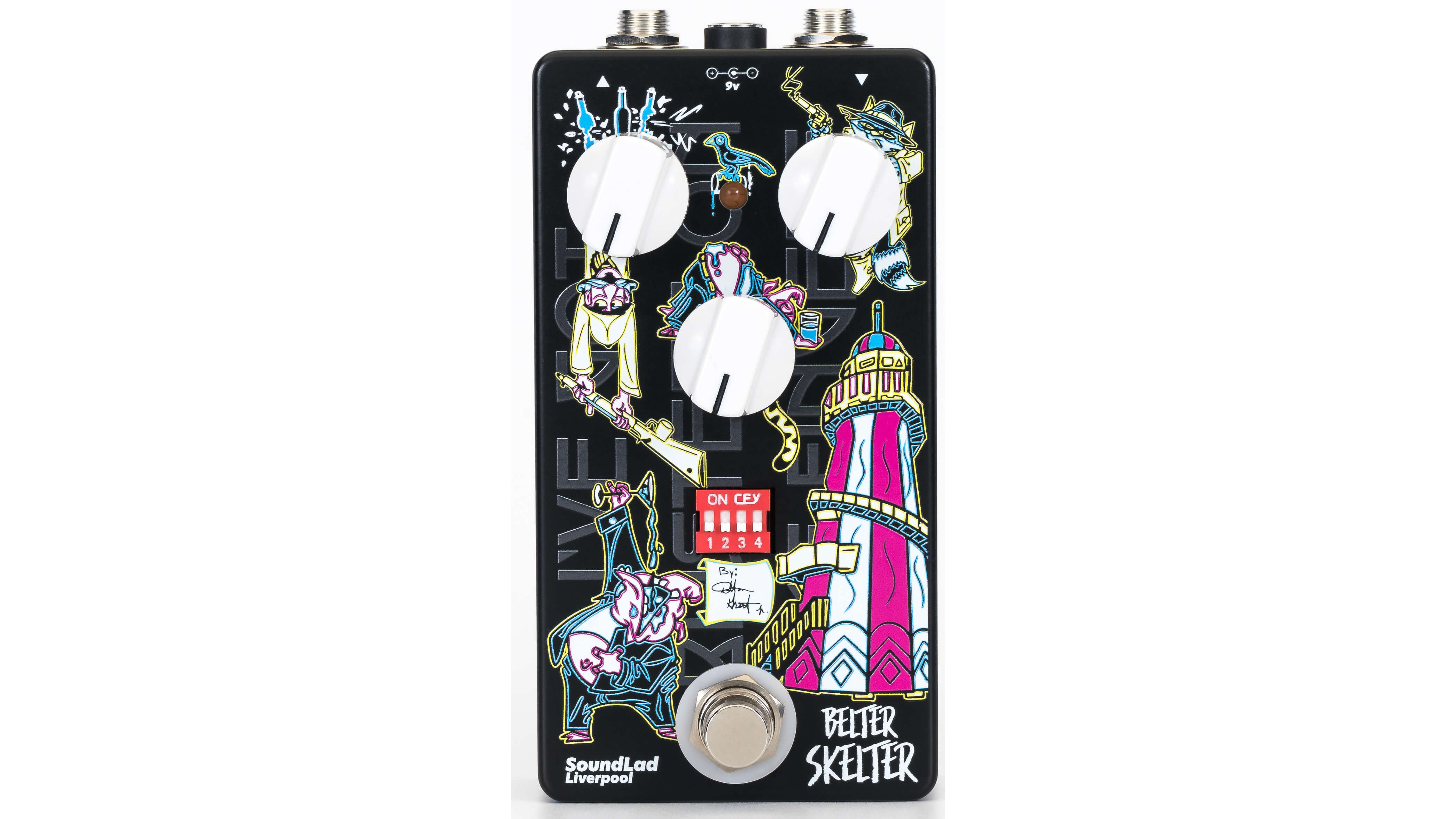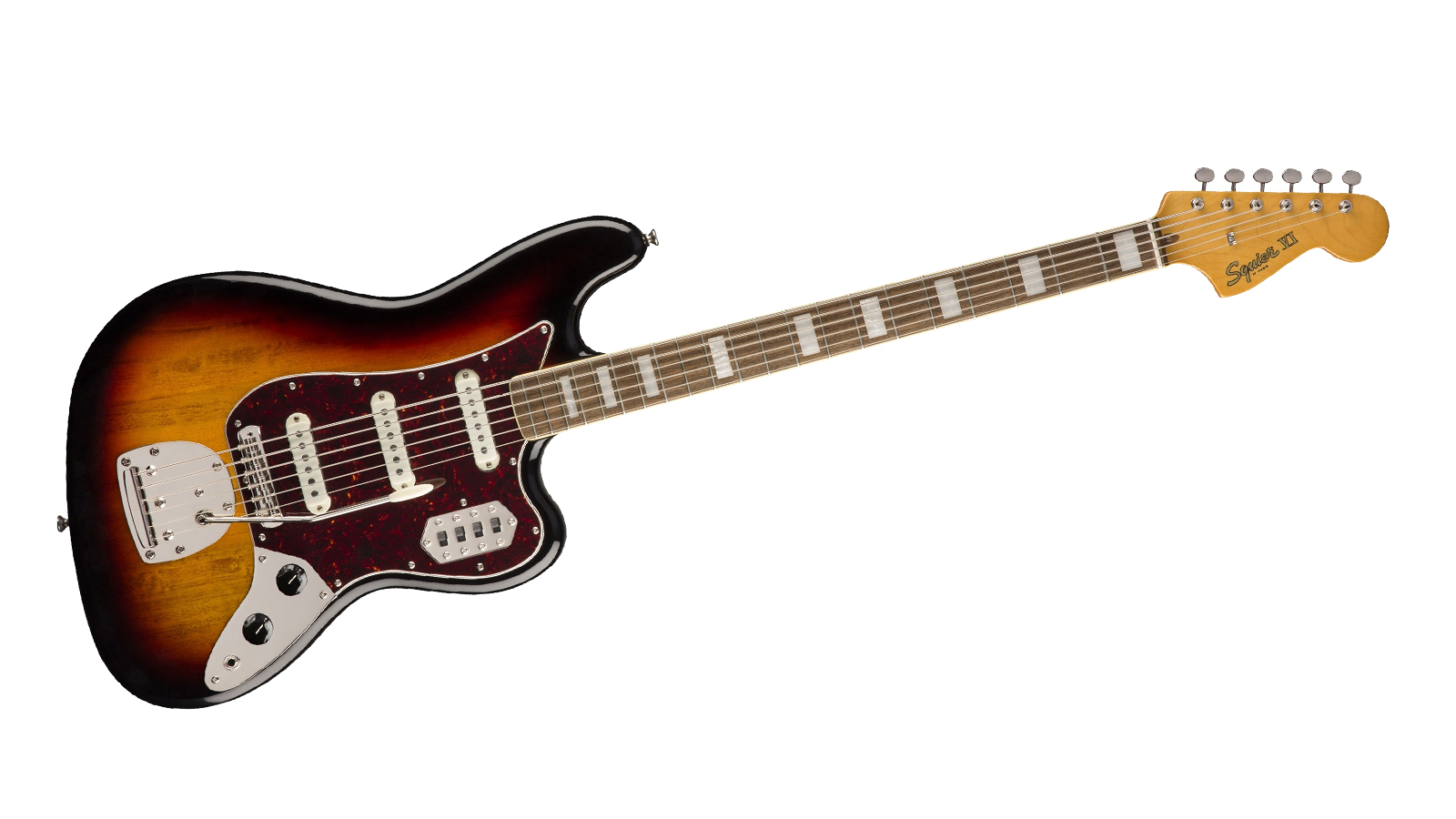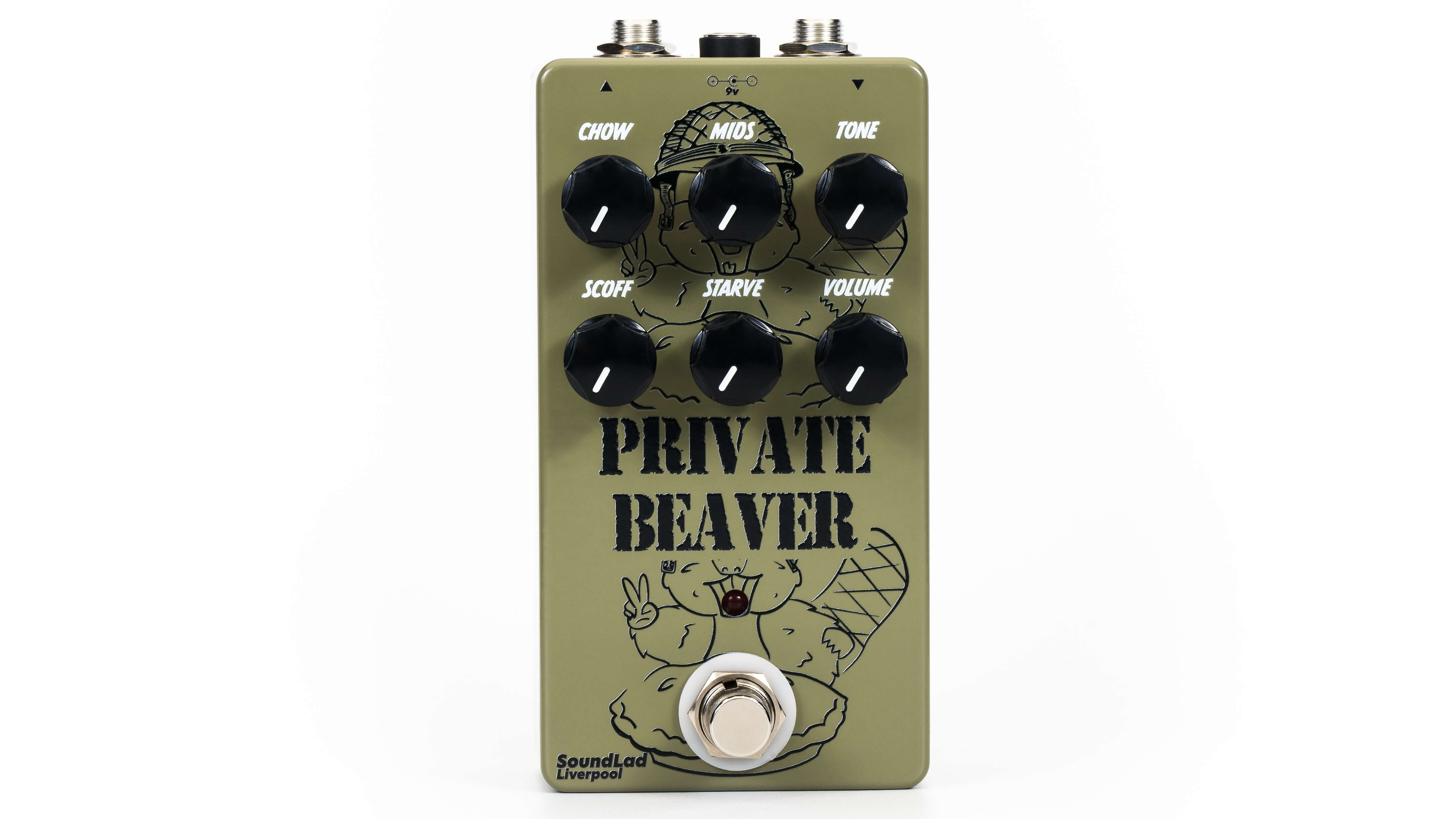
We're fans of Marc Dunn at SoundLad Liverpool – creator of the Hungry Beaver fuzz, Scran overdrive and a key figure in the creation of the 1991 pedal. All those effects pedals are built in the UK and sell for £99 on the SoundLad Liverpool site. They're all superb too. So when we heard Marc had expanded the SoundLad catalogue with three new pedals we scrambled for more info. And he was happy to oblige…
Belter Skelter

Belter Skelter may be the only pedal on the market that was designed specifically, though not exclusively, with the Bass VI in mind
"This is an original bass overdrive that aims to recreate the sound of John Lennon’s bass on the Beatles' White Album, and expand on it for modern players," says Marc. "Belter Skelter presents players with a gig-ready, no nonsense, plug and play bass drive solution for plugging into the front of an amplifier or preamp."
"Because it was designed to re-create the tones of The White Album, Belter Skelter may be the only pedal on the market that was designed specifically, though not exclusively, with the Fender Bass VI in mind. Great fun, simple controls (Gain, Tone, Volume), lots of classic and original sounds on tap, and you don’t have to be a sound engineer to know how to use it. Feels just as great in your chest as it does under your fingers. Absolute Belter."

Lennon used a Bass VI (Fender's six-string bass) for bass tracks on some key White Album songs.
"Belter Skelter takes those famous tones from Helter Skelter, Yer Blues, While My Guitar Gently Weeps, and Glass Onion, and uses them as a launch pad for a whole new style of bass overdrive that’s as simple to use as it is effective," continues Marc.
And its builder has also broken down each control, featuring SoundLad's usual bespoke approach to naming! Belter Skelter has three controls and four preset switches that control two sides to the sound;
John: "The main sound of the pedal. A discreet, flexible, and reactive bass overdrive that has been designed to sit perfectly in any mix. This side of Belter Skelter has a gain dial, tone dial, two switchable tone stacks, a mid-scoop selector, and the 'strangle switch' from the Bass VI built in."
Get the MusicRadar Newsletter
Want all the hottest music and gear news, reviews, deals, features and more, direct to your inbox? Sign up here.
Paul: "A fixed clean blend that has been specifically engineered to support the John side of Belter Skelter.
"These internal signal paths have been pre-mixed and phase matched in the low end to provide a solid, easy to dial, cohesive bass sound that is perfect for beginners and professionals alike. The volume dial controls the overall output."
Rocky: "Rocky is your Gain control and sets the gain on the John path. What happens here depends a lot on which tonestack you use (preset switch 2), whether or not you have the 'strangle switch' engaged (preset switch 1), if you have 'Paul' activated (switch 4) and where the Piggie dial is set…but largely (assuming both sides of the pedal are on) this will act as a blend control for the Piggie (Tone) control in the early part of the dial and add grit as you go.
Piggie: "Piggie is your Tone control that adjusts the position of a mid cut in the “John” side of the circuit while also acting as a treble cut. You can adjust the frequency band of the mid-cut using switch 2 on the presets and the depth of the cut using switch 3. You will find that adjusting Piggie also contributes to the sound and intensity of the overdrive."
Bill: "The volume control. Belter Skelter packs a fair punch with most of the volume you need for running into an amp or preamp between 8 and 11 o clock.
"We’re not really sure if bass players in general ever use boost circuits for slamming the front end of their amplifiers, in fact we rarely see valve bass amplifiers out there anymore… but if you did use a valve bass amplifier and if you do like to slam the front of it with a boost like we do, or wish to use it as a preamp to drive a power amp by plugging it into the FX Return, or send a line level signal into a passive DI, there’s a lot of fun to be had after 12 oclock.
Dipswitches
1. Strangle Switch: "Lifted straight from the internals of a Bass VI, the strangle switch has been built into the John (Drive) side of the Belter Skelter to give a bass cut right at the start of the signal chain, just like it would be if it was on the guitar.
"For Bass VI users specifically it means you can keep your switch down for rich clean sounds while using this for the drive without having to reach down to adjust the “strangle switch”, and for everyone else it means you can thicken or tighten the gain as you see fit."
2 . Tone Stack: "Select between two tonestacks to set the overall sound of the drive. Up is high-mid cut (400-1000Hz) and works great with a load of guitars for a bass sound,;heavy hitting on the bass and treble….down is a grinding 'three-piece' low mid cut (200-450Hz)."
3. Mid Cut: "Up is a big cut, down is a small cut."
4. Clean Blend - "The only control over the Paul (clean blend) path you have, whether it is on or off.
"Paul has been engineered and mixed to provide a solid bass foundation for the John path. Uniquely, Paul is phase matched to John. Phase mismatching is one of the most common causes for a bass sounding weak or thin in the mix and it is common practice to phase match bass guitars with kick drums when in the studio. By matching the phase of the two paths Belter Skelter ensures that the full 'chest feel' of the low end is preserved and the drive doesn’t drop out” when engaged."
Private Beaver

"Private Beaver walks the road well travelled by the Hungry Beaver but brings its own '90s flavour so authentic we're half expecting a fella in bright Joe Bloggs pants to take a rap middle eight half way through this description," says Marc.
"Where Meat and Gravy on the Hungry Beaver brought you NYC and Violet era tones, Scoff and Chow bring Bubble Font Green Russian and Red Army Overdrive tones.
"Lower gain, crunchier, and clearer than its predecessor with a pleasant upper mid register characteristic of the '90s era Big-M fuzzes, Private Beaver expands on the sonic territory covered by the Hungry Beaver even further with some fancy new tricks."
There's more changes afoot here from the Hungry Beaver too.
"Could go on all day but one we're having the most fun with right now is when being starved the Hungry Beaver brings in a mid scoop that is different to the scoop on the mids dial,", adds Marc. "We like this two-band scoop for that circuit, but because the Private Beaver has a Red Army overdrive-inspired sound in there we wanted to be able to use the starve control as a compression control for the overdrive side while still being able to produce a mid-pushy drive sound.
"The mids dial in Private Beaver is tuned to address the scoop brought on by using the starve control on the overdrive side so highly compressed mid push drive tones that I reckon a neon clad VHS Frank Gambale would be proud of have now been added to the Beaver range pallette."
Clean Machine

Just to add even more variety, the Clean Machine is completely different to anything else Marc has worked on so far. And this is one that might have the widest appeal.
"Clean Machine is a flexible high output preamp, designed to colour your tone in just the right way for enriching a flat sounding clean, boosting the front end of an amplifier into various flavours of overdrive, or standalone as a “desk channel” unrefined overdrive," explains Marc. "It contains all the tricks for achieving the variation of tones across this spectrum and offers them up in a simple to use, four-knob format.
"When running clean it nails the haunting mids sound for post rock ambience ala Explosion In The Sky / The Cure-type sounds," adds the designer.
"In a way, Clean Machine is something of a hybrid between an old mixing desk, a Fulltone Fat Boost, and a Cesar Diaz Texas Ranger, while being none of these things," says Marc. "You can achieve the 'direct in' trashy, unrefined distortions that come from pushing a mixer channel, a colourful clean sound, and a wonderfully refined boost, but you can also quite easily achieve a squishy mess.
Find out more at SoundLad Liverpool

Rob is the Reviews Editor for GuitarWorld.com and MusicRadar guitars, so spends most of his waking hours (and beyond) thinking about and trying the latest gear while making sure our reviews team is giving you thorough and honest tests of it. He's worked for guitar mags and sites as a writer and editor for nearly 20 years but still winces at the thought of restringing anything with a Floyd Rose.
“A pedal that sings with harmonic richness and blooming touch response”: Tone King offers up boutique tube amp tones for your pedalboard with the Imperial Preamp
“Each and every unit is perfectly dialled in to the 'sweet spot' that can be so elusive to find in vintage pedals”: Pigtronix’s Gas Giant is a high-gain fuzz pedal with a FET-driven onboard noise gate









